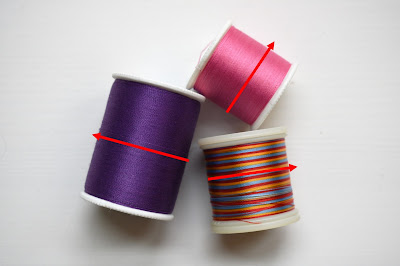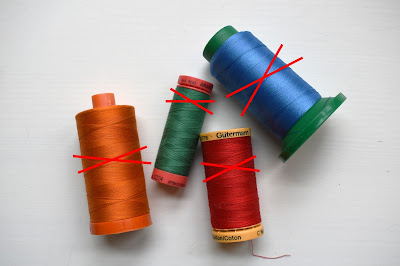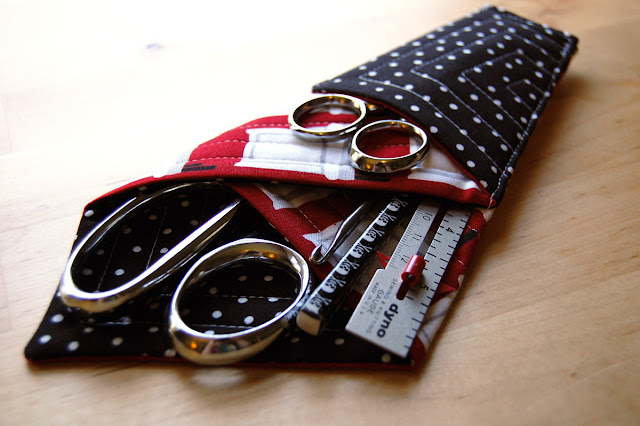Thread Spool Tips for Vintage Sewing Machines
This week I wrote an informative article for BERNINA's WeAllSew blog about different types of thread spools and how to best mount them on your BERNINA brand sewing machine.
But let's not leave out our oldie-but-goodie vintage sewing machines! These machines usually have just one spool pin on top of the machine. Let's take a closer look at the different types of thread spools and how best to sew with them on your vintage or antique machine.
The majority of threads are wound on a spool in one of two ways.
Stacked spools are wound with threads parallel to the spool ends, one wind of thread around the spool stacked on top of the last. These spools work best when the thread can feed off the side of the spool while the spool spins freely.
Cross-wound spools are wound with threads going back-and-forth in an "X" pattern. These spools work best when the thread can feed off the end of the spool while the spool is stationary.
Let's look at using a stacked spool of thread on your vintage sewing machine.
These stacked spools mount on the vertical spool pin. Make sure you have a felt pad mounted on the machine.
Pop the spool of thread right on the vertical spool pin and finish threading the machine.
As you sew, the thread will wind off the side of the spool as it turns freely on the spool pin. You need to have some kind of protection between the spool and your machine so the turning motion of the thread spool won't damage the machine's finish. I use felt pads, but I've seen all kinds of clever spool pin pads, from little Dresden plates to crochet flowers.
You can also use a stacked spool of thread with a thread stand. I use a Superior Threads stand (there are lots of brands out there, I like how many different options this stand offers).
To allow the spool to spin freely, the spool pin can be inserted in the side of the thread stand.
A spool cap is used just to keep the spool from spinning off the pin.
Place a thread stand to the side or behind your machine, wherever it is clear of any moving parts of the machine and out of the way as you sew.
The Superior Threads stand gives you some options of where to place the top guide on the stand, and I usually move this over the machine and clear of the hand wheel and motor. Then continue threading as usual.
Now let's pull out one of those cross-wound spools and take a look. Remember, cross-wound spools works best when thread can easily feed off one end. These spools are not made to feed off the side of the spool.
If you do try and use a cross-wound spool on the vertical spool pin, chances are you'll experience some jerking motions because the thread isn't going to want to move smoothly off the side. You could experience anything from some funky stitches made by the machine to a broken needle! It's better to use one of the following methods.
Use a thread stand - this thread stand has the ability to move the spool pin from the side to the bottom for use with cross-wound spools. Just pop the spool on the pin and gravity will do the rest.
Place the thread stand to the side or back of your machine, making sure the thread path is clear from moving parts.
The thread is allowed to feed easily off the end of the spool and to the machine.
If you don't have a thread stand you can try the glass method.
Find a glass or jar that the spool of cross-wound thread fits easily into without falling over.
Place the glass behind your machine, making sure the thread is clear of the hand wheel or other moving parts.
The thread is allowed to feed off the end of the spool and through the machine. This method isn't entirely perfect, but works well in a pinch!
A thread stand will also allow you to use larger cones of thread with your machine as well.
Just like using the thread stand with the other types of spools, place the cone of thread to the side or behind your machine out of the way of any moving parts. This thread stand has a top guide that is moveable, and I try to get it over the machine close to the vertical spool pin and the natural threading path as possible.
This allows the thread to feed evenly off the top end of the stand and on through your machine.
I hope these tips were helpful! If your machine is equipped with a horizontal spool pin please visit my tips over at WeAllSew!
























Comments